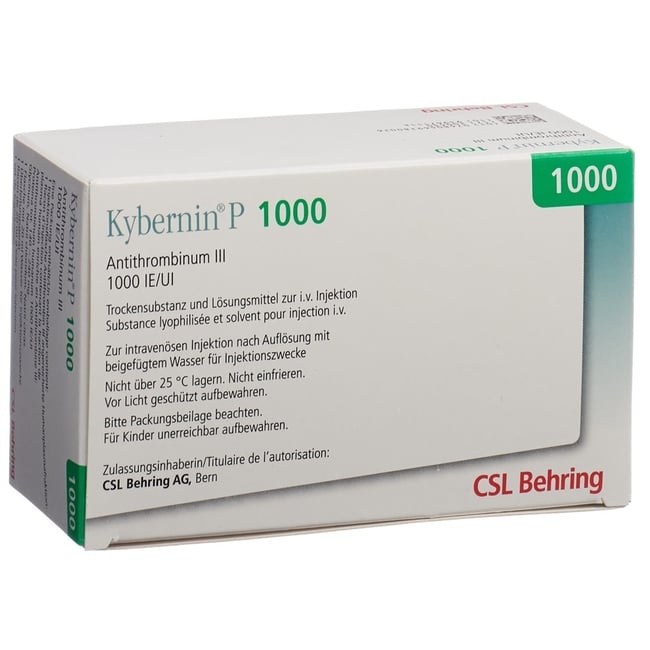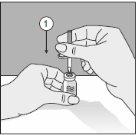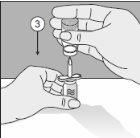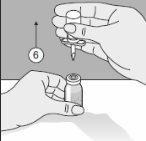

КИБЕРНИН П 1000 МЕ ПОРОШОК И РАСТВОРИТЕЛЬ ДЛЯ ПРИГОТОВЛЕНИЯ РАСТВОРА ДЛЯ ИНЪЕКЦИЙ ИЛИ ИНФУЗИЙ

Спросите врача о рецепте на КИБЕРНИН П 1000 МЕ ПОРОШОК И РАСТВОРИТЕЛЬ ДЛЯ ПРИГОТОВЛЕНИЯ РАСТВОРА ДЛЯ ИНЪЕКЦИЙ ИЛИ ИНФУЗИЙ

Инструкция по применению КИБЕРНИН П 1000 МЕ ПОРОШОК И РАСТВОРИТЕЛЬ ДЛЯ ПРИГОТОВЛЕНИЯ РАСТВОРА ДЛЯ ИНЪЕКЦИЙ ИЛИ ИНФУЗИЙ
Введение
Инструкция: информация для пользователя
Kybernin P 1000 UI порошок и растворитель для инъекционной и перфузионной раствора.
АнтиТромбин III человека
Прочитайте внимательно всю инструкцию перед началом использования этого препарата, поскольку она содержит важную информацию для вас.
- Сохраните эту инструкцию, поскольку вам может потребоваться прочитать ее снова.
- Если у вас есть какие-либо вопросы, проконсультируйтесь с вашим врачом или фармацевтом.
- Этот препарат назначен вам, и не передавайте его другим людям, даже если у них такие же симптомы, поскольку он может нанести им вред.
- Если вы испытываете побочные эффекты, проконсультируйтесь с вашим врачом или фармацевтом, даже если это побочные эффекты, не указанные в этой инструкции. См. раздел 4.
Содержание инструкции
- Что такое Kybernin P и для чего он используется
- Что вам нужно знать перед началом использования Kybernin P
- Как использовать Kybernin P
- Возможные побочные эффекты
- Хранение Kybernin P
- Содержание упаковки и дополнительная информация
1. Что такое Kybernin P и для чего он используется
Kybernin P - это порошок и растворитель для инъекционной и перфузионной раствора.
Этот препарат относится к группе препаратов, называемых антиТромботическими агентами.
Kybernin P используется, если у вас есть врожденный дефицит антиТромбина, для предотвращения образования и развития тромбов в кровеносных сосудах ваших ног (глубокая венозная тромбоз) или в других сосудах вашего тела (тромбоэмболизм) во время операции или в период вокруг родов и в сочетании с гепарином, если это показано.
Kybernin P также используется, если у вас есть приобретенный дефицит антиТромбина.
2. Что вам нужно знать перед началом использования Kybernin P
Не используйте Kybernin P:
Если вы аллергичны к активному веществу или к любому другому компоненту этого препарата (перечисленному в разделе 6).
Предостережения и меры предосторожности
Как и с любым белковым продуктом для внутривенного введения, возможно развитие реакций гиперчувствительности аллергического типа. Требуется тщательный мониторинг и наблюдение за пациентами для обнаружения любых симптомов во время периода перфузии. Пациентов необходимо проинформировать о ранних признаках реакций гиперчувствительности, которые включают кожные высыпания, которые могут распространиться до общей уртикарии, чувство сдавления в груди, затруднение дыхания, гипотония и анафилаксия. Если эти симптомы появляются после введения, необходимо обратиться к врачу.
В случае шока будут соблюдаться существующие рекомендации по лечению.
Вирусная безопасность
При введении препаратов, полученных из человеческой крови или плазмы, необходимо принять определенные меры для предотвращения передачи инфекций пациентам. Такие меры включают:
- Тщательный отбор доноров для исключения тех, кто находится в группе риска по заболеваниям, передающимся через кровь,
- Анализ маркеров конкретных инфекций в индивидуальных донорских материалах и в плазменных пулах,
- Включение стадий в процессе производства для удаления/инактивации вирусов.
Несмотря на это, при введении препаратов, полученных из человеческой крови или плазмы, возможность передачи инфекционных агентов не может быть полностью исключена. Это также относится к возникающим или неизвестным вирусам или другим типам инфекций.
Принятые меры считаются эффективными для вирусов с оболочкой, таких как вирус иммунодефицита человека (ВИЧ), вирус гепатита Б (ВГБ), вирус гепатита С (ВГС), и для невирусных вирусов, таких как гепатит А (ВГА) и парвовирус В19.
Ваш врач может порекомендовать вам рассмотреть возможность вакцинации против гепатита А и Б, если вы регулярно получаете продукты с антиТромбином, полученным из человеческой плазмы.
Высоко рекомендуется, чтобы каждый раз, когда вводится Kybernin P пациенту, делалась запись о названии препарата и номере партии, введенного пациенту, для поддержания связи между пациентом и партией продукта.
Клинический и биологический мониторинг при совместном введении антиТромбина и гепарина:
- Для корректировки дозы гепарина и предотвращения чрезмерной гипокоагуляции необходимо регулярно проводить контроль антикоагуляции (АППТ, и когда это уместно, активность анти-ФХа), на коротких интервалах и особенно в первые минуты/часы после начала введения антиТромбина.
- Ежедневное определение уровня антиТромбина для корректировки индивидуальной дозы, учитывая риск снижения уровня антиТромбина в результате длительного лечения нефракционированным гепарином.
Использование Kybernin P с другими препаратами
Гепарин: замена антиТромбина во время введения гепарина в терапевтических дозах увеличивает риск кровотечения. Эффект антиТромбина значительно усиливается гепарином. Период полувыведения антиТромбина может значительно уменьшиться при одновременном лечении гепарином из-за ускоренной мобилизации антиТромбина. Следовательно, одновременное введение гепарина и антиТромбина пациенту с высоким риском кровотечения должно быть клинически и биологически контролируемо.
Сообщите вашему врачу или фармацевту, если вы используете, недавно использовали или можете использовать любой другой препарат.
Беременность, лактация и фертильность
Опыт использования человеческого антиТромбина в беременных женщинах ограничен.
Безопасность использования Kybernin P у беременных женщин не была установлена в контролируемых клинических испытаниях. Исследования на животных недостаточны для оценки безопасности в отношении репродукции, развития эмбриона или плода, течения беременности и пери- и постнатального развития.
Нет негативного опыта, связанного с лечением во время беременности и лактации.
Следовательно, Kybernin P должен быть назначен беременным или кормящим женщинам с дефицитом антиТромбина только в случае явной необходимости, учитывая, что беременность увеличивает риск тромбоэмболических эпизодов у этих пациентов.
Если вы беременны или кормите грудью, считаете, что можете быть беременной или планируете стать беременной, проконсультируйтесь с вашим врачом или фармацевтом перед использованием этого препарата. Ваш врач оценит возможный риск для плода и сообщит вам, является ли лечение этим препаратом подходящим. Ваш врач порекомендует это лечение только в случае явной необходимости.
Вождение и использование машин
Нет указаний на то, что Kybernin P может повлиять на способность управлять транспортными средствами или работать с машинами.
Kybernin P содержит натрий
Пациенты с низконатриевой диетой должны учитывать, что Kybernin P 1000 UI содержит до 89,52 мг (3,894 ммоль) натрия на 1000 UI.
3. Как использовать Kybernin P
Kybernin P - это препарат для госпитального использования, поэтому он будет введен вам в больнице медицинским персоналом.
Kybernin P вводится путем приготовления раствора, который затем вводится или перфузируется внутривенно медленно (максимально 4 мл/мин).
Следуйте точно инструкциям по введению этого препарата, указанным вашим врачом или фармацевтом. В случае сомнений проконсультируйтесь снова с вашим врачом или фармацевтом.
Ваш врач укажет, с какой частотой и на какие интервалы должен быть введен Kybernin P.
Ваш врач укажет продолжительность лечения Kybernin P.
Если вы использовали больше Kybernin P, чем должно быть:
Не сообщалось о симптомах передозировки с антиТромбином.
В случае передозировки или случайного введения проконсультируйтесь с отделением токсикологии. Телефон 91 562 04 20.
Если вы забыли использовать Kybernin P:
- Немедленно проконсультируйтесь с вашим врачом или фармацевтом.
- Не вводите двойную дозу для компенсации пропущенных доз.
4. Возможные побочные эффекты
Как и все препараты, этот препарат может вызывать побочные эффекты, хотя не все люди испытывают их.
Следующие нежелательные реакции основаны на послепродажном опыте. В случаях, когда имеются данные, использованы следующие стандартные категории частоты:
Очень часто >1/10
Часто >1/100 до <1>
Нечасто ≥ 1/1000 до <1>
Редко ≥ 1/10 000 до <1>
Очень редко <1>
Классификация по органам и системам | Предпочтительный термин | Частота |
Расстройства иммунной системы | Гиперчувствительность/анафилактические реакции, включая тяжелую анафилаксию и шок. | Редко |
Общие расстройства и расстройства в месте введения | Пирексия | Редко |
Для информации о вирусной безопасности см. «Предостережения и меры предосторожности» в разделе 2 этой инструкции.
Сообщение о побочных эффектах
Если вы испытываете любой тип побочного эффекта, проконсультируйтесь с вашим врачом или фармацевтом, даже если это побочные эффекты, не указанные в этой инструкции. Вы также можете сообщить об этом напрямую через Испанскую систему фармаковигиланса для человеческих препаратов: https://www.notificaram.es. Сообщая о побочных эффектах, вы можете внести свой вклад в предоставление более полной информации о безопасности этого препарата.
5. Хранение Kybernin P
Храните этот препарат вне поля зрения и досягаемости детей.
Не храните при температуре выше 25 °C. Не замораживайте.
Не используйте этот препарат после даты истечения срока годности, указанной на упаковке после EXP. Дата истечения срока годности - последний день месяца, указанного.
Не используйте растворы, которые являются мутными или содержат осадки (осадки/частицы).
После реconstitution физико-химическая стабильность была продемонстрирована в течение 8 часов при комнатной температуре (макс. 25 °C). С микробиологической точки зрения и учитывая, что Kybernin P не содержит консервантов, реconstituted раствор должен быть использован немедленно. Если это невозможно, не храните более 8 часов при комнатной температуре (макс. 25 °C).
Утилизация неиспользованного препарата или отходов должна осуществляться в соответствии с местными правилами.
Препараты не должны выбрасываться в канализацию или мусор. Спросите вашего фармацевта, как утилизировать упаковку и препарат, который вам больше не нужен. Таким образом, вы поможете защитить окружающую среду.
6. Содержание упаковки и дополнительная информация
Состав Kybernin P 1 000 UI
- Активное вещество - антиТромбин III. Каждый лиофилизированный флакон содержит 1 000 UI антиТромбина III. Реconstituted раствор содержит примерно 50 UI антиТромбина III/мл антиТромбина, полученного из человеческой плазмы, когда он реconstituted с 20 мл воды для инъекций.
Сила (UI) определяется с помощью метода хромогенного субстрата в соответствии с Европейской фармакопеей. Специфическая активность Kybernin P составляет примерно 5,3 UI/мг белка.
- Другие компоненты - глицин, хлорид натрия, цитрат натрия, соляная кислота или гидроксид натрия (для корректировки pH) и вода для инъекций.
См. раздел 2 для важной информации о некоторых эксципиентах.
Внешний вид продукта и содержание упаковки
Порошок и растворитель для инъекционной и перфузионной раствора.
Упаковка для продажи содержит инъекционный флакон из молдавленного стекла типа II (согласно Еврофарм.), бесцветный и запечатанный резиновым пробкой, пластиковым диском и алюминиевой крышкой, содержащей лиофилизированный препарат, флакон с 20 мл воды для инъекций (растворитель для приготовления раствора) и трансфер-наконечник.
Представления:
Индивидуальная упаковка Kybernin P 1 000 UI:
1 инъекционный флакон с лиофилизированным препаратом
1 флакон с 20 мл воды для инъекций
1 трансфер-наконечник
Клиническая упаковка Kybernin P 1 000 UI:
10 инъекционных флаконов с лиофилизированным препаратом
10 флаконов с 20 мл воды для инъекций
10 трансфер-наконечников
Возможно, не все размеры упаковок будут продаваться.
Владелец разрешения на продажу и производитель
Владелец разрешения на продажу
CSL Behring, S.A.
ул. Таррагона, 157, 18-й этаж
08014 Барселона - Испания
Производитель
CSL Behring GmbH
Эмиль-фон-Беринг-Штр., 76
35041 Марбург - Германия
Дата последнего пересмотра этой инструкции: ноябрь 2020 г.
Подробная и актуальная информация о этом препарате доступна на сайте Испанского агентства по лекарственным средствам и медицинским изделиям (AEMPS) http://www.aemps.gob.es
Эта информация предназначена только для медицинских специалистов:
Дозировка
При врожденном дефиците доза должна быть индивидуализирована для каждого пациента, учитывая семейную историю по отношению к тромбоэмболическим эпизодам, клинические факторы риска пациента и лабораторные тесты.
Дозировка и продолжительность заместительной терапии при приобретенном дефиците зависят от уровня антиТромбина плазмы, наличия признаков повышенной мобилизации, основного заболевания и тяжести клинической картины пациента. Доза и частота введения должны основываться всегда на клинической эффективности и лабораторных тестах в каждом конкретном случае.
Количество введенных единиц антиТромбина выражается в Международных единицах (UI), в отношении стандарта Всемирной организации здравоохранения (ВОЗ), действующего для антиТромбина. Активность антиТромбина плазмы выражается в процентах (относительно нормальной человеческой плазмы) или в Международных единицах (относительно международного стандарта для антиТромбина в плазме).
Одна международная единица (UI) активности антиТромбина эквивалентна количеству антиТромбина в 1 мл нормальной человеческой плазмы. Расчет необходимой дозы антиТромбина основан на эмпирическом наблюдении, что 1 Международная единица (UI) антиТромбина на килограмм веса тела повышает активность антиТромбина плазмы примерно на 1,5%.
Первоначальная доза определяется по следующей формуле:
Требуемые единицы = вес тела [кг] x (100 - текущая активность антиТромбина [%]) x 2/3
Активность антиТромбина, которую необходимо достичь изначально, зависит от клинического состояния. Когда установлено, что заместительная терапия антиТромбином показана, доза должна быть достаточной для достижения желаемой активности антиТромбина и для поддержания эффективного уровня. Доза должна определяться и контролироваться в соответствии с лабораторными тестами на активность антиТромбина, которые должны проводиться не менее двух раз в день до стабилизации пациента, а затем один раз в день, предпочтительно непосредственно перед следующей перфузией. Корректировка дозы должна учитывать как признаки повышенной продукции антиТромбина в соответствии с лабораторными тестами, так и клиническую эволюцию. Активность антиТромбина должна поддерживаться выше 80% во время лечения, если только клиническое состояние не указывает на другой уровень эффективности.
Обычная первоначальная доза при врожденном дефиците составляет 30-50 UI/кг.
Следовательно, доза и частота введения, а также продолжительность лечения должны корректироваться в соответствии с биологическими данными и клинической ситуацией.
Педиатрическое население:
Kybernin P не рекомендуется для использования у детей младше 6 лет из-за нехватки данных.
На основе клинического опыта не может быть рекомендовано использование антиТромбина в лечении синдрома дыхательного дистресса у недоношенных детей.
Инструкции для правильного введения препарата
Общие инструкции
Лиофилизированный порошок должен быть полностью реconstituted в асептических условиях с помощью сопровождающего растворителя. Получается прозрачный или слегка опалесцирующий раствор.
Подходящим растворителем является 5% раствор альбумина человека. Для приготовления разведений до 1:5 можно использовать также раствор Рингера, физиологический раствор, 5% раствор глюкозы или полигелин.
Использование гидроксиэтилкрахмалов не рекомендуется в качестве растворителя (для перфузии), поскольку было обнаружено снижение активности антиТромбина.
Этот препарат не должен смешиваться с другими препаратами в шприце/перфузионном оборудовании. Допамин, добутамин и фуросемид не должны вводиться через один и тот же венозный доступ.
Продукт должен вводиться внутривенно. Максимальная скорость перфузии: 4 мл/мин.
Реconstitution
Для правильного обращения с Transofix двойной наконечник следуйте шагам ниже:

- После удаления одной из двух защитных крышек вставьте открытый наконечник перпендикулярно в резиновую пробку флакона с растворителем.
- Удалите защитную крышку со второго наконечника.

- Проколите крышку флакона с препаратом этим наконечником.
- Поверните всю единицу на 180°.
- Поместите ее так, чтобы основание флакона с препаратом опиралось на поверхность стола. Растворитель теперь течет в флакон с препаратом.

- Transofix двойной наконечник вместе с флаконом растворителя удаляется из флакона с препаратом, и затем растворяется Kybernin P. Реconstituted Kybernin P может быть извлечен в шприц и введен.
- Страна регистрации
- Активное вещество
- Требуется рецептДа
- Производитель
- Информация носит справочный характер и не является медицинской рекомендацией. Перед приемом любых препаратов проконсультируйтесь с врачом. Oladoctor не несет ответственности за медицинские решения, принятые на основе этого контента.
- Аналоги КИБЕРНИН П 1000 МЕ ПОРОШОК И РАСТВОРИТЕЛЬ ДЛЯ ПРИГОТОВЛЕНИЯ РАСТВОРА ДЛЯ ИНЪЕКЦИЙ ИЛИ ИНФУЗИЙФорма выпуска: ИНЪЕКЦИОННЫЙ РАСТВОР ДЛЯ ИНФУЗИЙ, 1000 ЕД антитромбин III человекаАктивное вещество: Антитромбин IIIПроизводитель: Octapharma S.A.Требуется рецептФорма выпуска: ИНЪЕКЦИОННЫЙ РАСТВОР ДЛЯ ИНФУЗИЙ, 500 ЕД антитромбин III человекаАктивное вещество: Антитромбин IIIПроизводитель: Octapharma S.A.Требуется рецептФорма выпуска: ИНЪЕКЦИОННЫЙ РАСТВОР, 500 МЕ антитромбинаАктивное вещество: Антитромбин IIIПроизводитель: Csl Behring S.A.Требуется рецепт
Аналоги КИБЕРНИН П 1000 МЕ ПОРОШОК И РАСТВОРИТЕЛЬ ДЛЯ ПРИГОТОВЛЕНИЯ РАСТВОРА ДЛЯ ИНЪЕКЦИЙ ИЛИ ИНФУЗИЙ в других странах
Лучшие аналоги с тем же действующим веществом и терапевтическим эффектом.
Аналог КИБЕРНИН П 1000 МЕ ПОРОШОК И РАСТВОРИТЕЛЬ ДЛЯ ПРИГОТОВЛЕНИЯ РАСТВОРА ДЛЯ ИНЪЕКЦИЙ ИЛИ ИНФУЗИЙ в Польща
Аналог КИБЕРНИН П 1000 МЕ ПОРОШОК И РАСТВОРИТЕЛЬ ДЛЯ ПРИГОТОВЛЕНИЯ РАСТВОРА ДЛЯ ИНЪЕКЦИЙ ИЛИ ИНФУЗИЙ в Україна
Врачи онлайн по КИБЕРНИН П 1000 МЕ ПОРОШОК И РАСТВОРИТЕЛЬ ДЛЯ ПРИГОТОВЛЕНИЯ РАСТВОРА ДЛЯ ИНЪЕКЦИЙ ИЛИ ИНФУЗИЙ
Консультация по дозировке, побочным эффектам, взаимодействиям, противопоказаниям и продлению рецепта на КИБЕРНИН П 1000 МЕ ПОРОШОК И РАСТВОРИТЕЛЬ ДЛЯ ПРИГОТОВЛЕНИЯ РАСТВОРА ДЛЯ ИНЪЕКЦИЙ ИЛИ ИНФУЗИЙ – по решению врача и с учетом местных правил.














